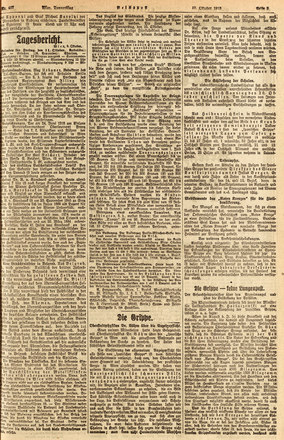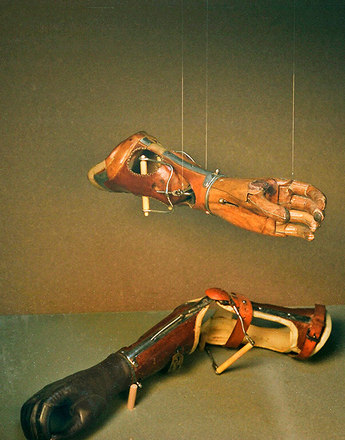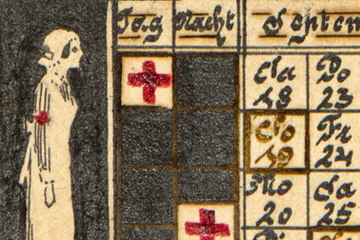-

“Preventing Spanish flu”, newspaper article from Reichspost, issue of 18 October 1918 (Part 2)
Copyright: Wienbibliothek im Rathaus
-

“The activity of the Vienna Municipal Administration at the Chairmen’s Conference during the World War” on the spread of Spanish flu, extract (p. 100)
Copyright: Wienbibliothek im Rathaus
-

“The activity of the Vienna Municipal Administration at the Chairmen’s Conference during the World War” on the spread of Spanish flu, extract (p. 101)
Copyright: Wienbibliothek im Rathaus
At the end of the war the world was plagued by a terrible flu epidemic which claimed 25 million victims, many more than had died during the war. Although it did not come from the Iberian peninsula, as often assumed, but probably broke out in America, it is still known today as the Spanish Flu.
The epidemic spread to all continents, affecting Asia particularly severely and causing 21 million deaths there. In Europe over 2 million people died. It had nothing to do with the war and hit belligerent and neutral states alike. Moreover, mortality bore no relation to the involvement of the individual countries in the fighting. In Austria the number of deaths from Spanish Flu rose in 1918 to 18,500 and a further 2,400 died in early 1919.
Unlike other epidemics, most of the victims of Spanish Flu were between 15 and 40 years of age. Doctors were puzzled. They did not know what was causing it, nor how it was transmitted and they were not therefore able to prevent it. Even the diagnosis was difficult. Weak nerves, malnutrition and contact with infected troops were cited as possible causes. The patients had severe febrile episodes. In many cases it was accompanied by a secondary staphylococcic infection leading to life-threatening pneumonia or pleurisy. Known drugs like aspirin, quinine or pyrimidine had no effect. Good results were ultimately achieved with a particular anti-streptococcal serum.
In many places, Spanish Flu brought public life to a standstill. Schools, churches and other public facilities were closed. The postal service broke down. In Vienna and Munich so many tram drivers and conductors were sick that public transport was also considerably restricted. Although the epidemic reached Vienna in September 1918, schools were not closed there until October.
Doctors were overwhelmed by the numbers involved, and the Vienna city council appointed additional medical assistants. The Vienna doctors were also provided with 100 military vehicles by the Ministry of War to enable them to treat their patients. Both civilian and military hospitals were overcrowded. There was also a shortage of doctors, medical orderlies and nurses, who were themselves sick. As the Viennese authorities did not have a compulsory reporting mechanism, it is impossible to know exactly how widespread the disease within the population of Vienna.
Among the many victims of Spanish Flu in Austria-Hungary was Egon Schiele. In his last letter he described his concern about his pregnant wife, who also died of the flu. "Dear Mother Schiele, Edith got the Spanish Flu eight days ago and has pneumonia. She is six months pregnant. The disease is very serious and life-threatening; I am preparing myself for the worst."
Translation: Nick Somers
Biwald, Brigitte: Von Helden und Krüppeln. Das österreichisch-ungarische Militärsanitätswesen im Ersten Weltkrieg. Teil 2, Wien 2002
Biwald, Brigitte: Krieg und Gesundheitswesen, in: Pfoser, Alfred/Weigl, Andreas (Hrsg.): Im Epizentrum des Zusammenbruchs. Wien im Ersten Weltkrieg, Wien 2013, 294-301
Dietrich, Elisabeth: Der andere Tod. Seuchen, Volkskrankheiten und Gesundheitswesen im Ersten Weltkrieg, in: Eisterer, Klaus/Steininger, Rolf (Hrsg.): Tirol und der Erste Weltkrieg, Innsbruck 2011, 255-275
Müller, Jürgen: Die Spanische Influenza 1918/19. Der Einfluß des Ersten Weltkrieges auf Ausbreitung, Krankheitsverlauf und Perzeption einer Pandemie, in: Eckart, Wolfgang U./Gradmann, Christoph (Hrsg.): Die Medizin und der Erste Weltkrieg, 2. Auflage, Herbolzheim 2003, 321-342
Winkle, Stefan: Geißeln der Menschheit. Kulturgeschichte der Seuchen, Düsseldorf/Zürich 1997
Quotes:
"Dear Mother Schiele …": Schiele, Egon: Brief, quoted from: Biwald, Brigitte: Von Helden und Krüppeln. Das österreichisch-ungarische Militärsanitätswesen im Ersten Weltkrieg. Teil 2, Wien 2002, 559 (Translation)








